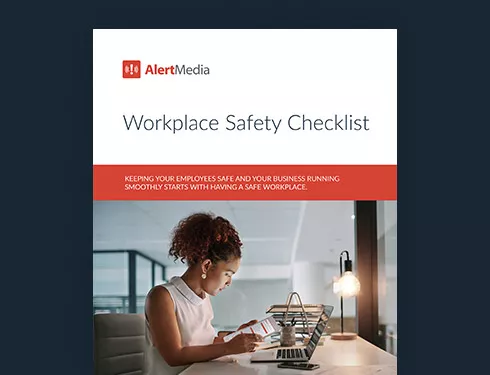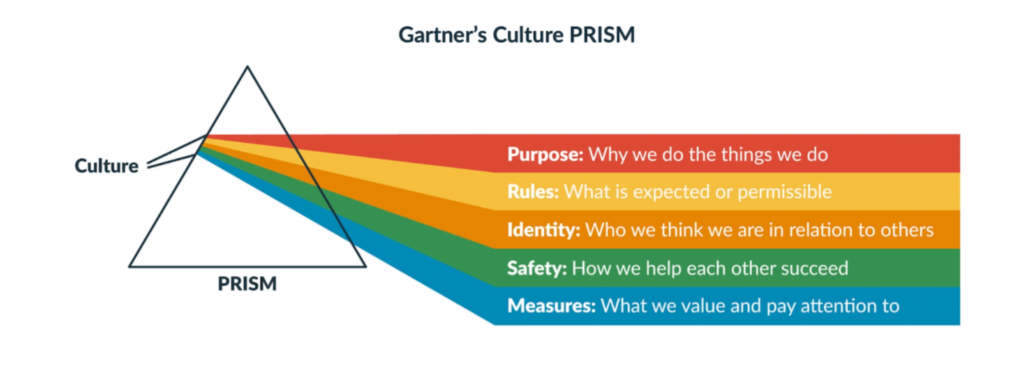![Building a Safety Culture [Webinar Recap]](https://www.alertmedia.com/wp-content/uploads/2022/02/Blog-Webinar-Recap-BuildSafetyCulture-1024x536.jpg)
Building a Safety Culture [Webinar Recap]
In this post, we recap lessons learned from a recent webinar about safety culture and instilling safety as a strategic objective across your entire organization.

Safety is often thought of as little more than just a list of procedures to be followed.
While that may be the case at some companies and organizations, the ones who find the most success with their safety efforts are those who focus on integrating an appreciation and respect for safety into the broader culture.
We explored this topic in our recent webinar: Build a Safety Culture That Withstands Change. Our featured speakers were:
- Mark French: Senior Health, Safety, and Environmental Manager, Dalkia Energy Solutions
- Peter Steinfeld: SVP of Safety Solutions, AlertMedia
Why Safety Culture Matters
What is safety culture?
Mark defined safety culture as the shared goals, practices, attitudes, and values towards safety.
The PRISM framework developed by tech research and consulting firm Gartner is another valuable tool to help understand how these attributes combine to determine a company’s safety culture.

Safety lessons from Alcoa
Mark illustrated this with the example of Alcoa and their former CEO, Paul O’Neil. When O’Neil joined the company in 1987, he thought that the company’s employees were incurring too many injuries. He believed that people were a company’s most precious resource, and their concerns needed to be listened to. So, in an effort to improve the company’s safety culture, he allowed and encouraged any employee to reach out to him personally with safety concerns. This allowed Alcoa to learn more about their safety procedures and shortcomings than they ever had.
O’Neil knew that executives tend to think of things in terms of numbers—such as the rate of injury at a factory or the amount of money paid out to insurance claims. He felt this led to companies thinking of their people as a commodity, to be used and spent. Instead, O’Neil constantly reminded everyone that safety isn’t just for the benefit of numbers in a report but rather to benefit the actual humans who give their all for Alcoa.
O’Neil’s third observation was that “safety culture” shouldn’t be a siloed goal. Rather, it should be integrated into the very fabric of your organization, so much so that it isn’t thought of as “safety culture” but as part of the company’s overarching strategy.
Paul O’Neil was a trailblazer for workplace safety culture, but you might need more than his pioneering spirit to implement such a practice at your own company. Executives and leaders might not buy into the idea of a safety culture.
During the webinar, Mark explained why situations like that are a perfect time to bring out the business case for safety culture:
It’s the law
Legal requirements vary by location and industry, but most organizations are expected to provide for the safety of their employees. In the United States, the Occupational Safety and Health Act (OSH) requires that all organizations provide safe and healthy work environments for their employees. Organizations that violate OSHA regulations and experience a hazardous incident will be held liable and could be on the hook for legal repercussions such as fines.
Don’t just comply, thrive!
Mark argues that by focusing on safety rules and procedures, organizations are not only complying with the law, but they are also building a foundation for a more sustainable organization. By focusing on safety concerns, leaders help the overall business run more efficiently and with less risk since it will be less likely to experience a workplace emergency. We protect our organization, systems, and communities when we protect our people.
The ROI of safety
Reexamining procedures through the lens of safety can also increase business efficiency. To illustrate this, Mark shared an example of a shipping company that was able to not only able to reduce injuries by listening to its employees’ safety concerns but also save time and money by implementing the requested changes. It’s always less expensive to fix a potential issue before it becomes a disaster.
Safety as a fundamental human motivation
Mark drew on his background in organizational psychology to tell us how deep-rooted a yearning for safety is in the human brain. He explained how taking care of safety allows people to focus more on “higher” pursuits like problem-solving instead of constantly worrying about basic security.
Measuring safety
Finally, the presenters showed that there are essentially two schools of thought for measuring safety outcomes.
The old method includes some familiar metrics, including incident rates, the number of lost hours, or the amount of money paying out insurance claims. What makes these all similar is that they can only ever be reactive. That is, these numbers only tell you what’s happened in the past, and the best you can do with that is react.
The new way, on the other hand, focuses on proactive information. It encourages safety leaders to listen to the concerns of their employees, as they’re the ones most likely to encounter safety gaps. Ask your team the right questions and seek out context to truly understand if the data is pointing you in the right direction. This can only be done if you interact with your people!
Safety Culture Best Practices
How to engage and empower your workforce
Mark and Peter then outlined some Dos and Don’ts for engaging your people and implementing a safety culture:
What to do:
- Create a cultural vision statement
- Teach the right tools
- Embrace problem solving and continual improvement
- Solicit feedback from employees
- Invest in training
What not to do:
- Avoid being a “safety cop”
- Don’t shut down if/when you reach the goal of zero
- Never be afraid to fail
The speakers also talked about the benefits of creating a “safety committee,” which you can think of as your eyes, ears, and voice amongst your employees. This group should be empowered to serve as an extension of safety leadership. We also learned that the best candidates for the safety committee are those who show leadership skills, problem-solving prowess, a capacity for creative thinking, and a passion for safety.
Develop Trust Through Consistent Communication
Peter emphasized that fast, consistent communication is vital for all safety plans. Not only should organizations keep their employees informed on new policies and potential safety hazards at the workplace, but they should also try to help and warn employees of threatening situations that might cause them harm at home or while traveling. Two-way communication is critical here—it allows your employees to offer their own insight or experiences to the pool of information you have to work with during an emergency.
Mark added that it isn’t enough to communicate these things once. Rather, for information like new PPE policies, your organization should communicate these changes regularly to remind your people over time as they grow accustomed to the change. And finally, he advises safety leaders to make sure they set aside time to recognize safety wins. If your people are knocking safety out of the park, make sure they know that their efforts are seen and appreciated!
If you’d like more information on the topic of building a safety culture at your organization, be sure to watch the full webinar!

![How to Run a Ransomware Tabletop Exercise [+ Scenarios]](https://www.alertmedia.com/wp-content/uploads/2022/09/Blog-Ransomware-TabletopExercises.jpg)


